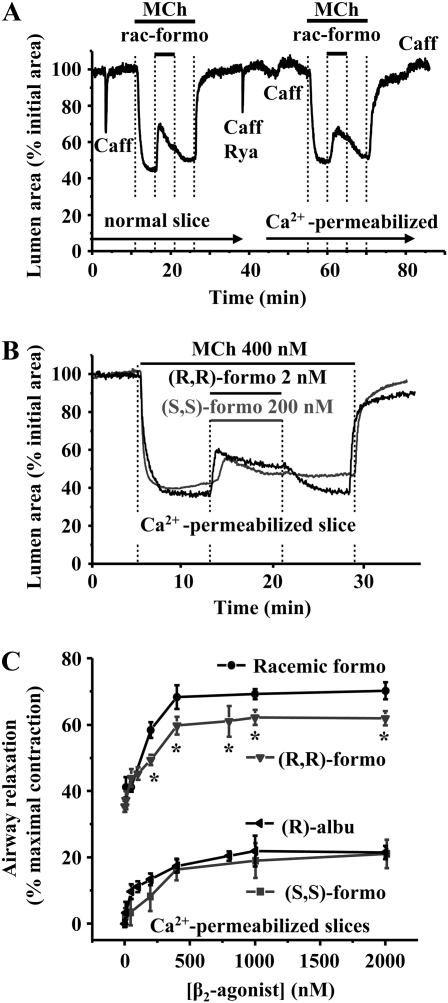Figure 7.
Effect of formoterol isomers and (R)-albuterol on Ca2+ sensitivity in Ca2+-permeabilized lung slices. (A) A normal airway was contracted with 400nM MCh. The addition of racemic formoterol (400 nM) induced relaxation of the airway. To convert this lung slice into the Ca2+-permeabilized state, the slice was perfused simultaneously with 20 mM caffeine and 50 μM ryanodine, which induced a transient contraction. A second caffeine application did not evoke a contraction, confirming the Ca2+-permeabilized status of the lung slice. Exposure to 400 nM MCh induced contraction of the same airway in a similar manner to that induced in the normal airway, indicating that MCh increased Ca2+ sensitivity. Exposure to racemic formoterol relaxed the contracted airway, indicating a decrease in Ca2+ sensitivity. (B) Representative experiments showing airway contraction induced by 400 nM MCh, followed by relaxation induced by (R,R)-formoterol (2 nM) (black line) and (S,S)-formoterol (200 nM) (gray line) in a Ca2+-permeabilized lung slice. Under these conditions (SMCs with a high clamped intracellular calcium concentration [[Ca2+]i]), contraction indicates an increase in Ca2+ sensitivity; relaxation indicates a decrease in Ca2+ sensitivity. (C) The mean concentration-dependent relaxation of airways contracted by MCh (400 nM) to (R,R)-, racemic, (S,S)-formoterol, and (R)-albuterol in Ca2+-permeabilized slices (n = 6 mice for (R,R)-formoterol and racemic formoterol; n = 5 mice for (S,S)-formoterol and (R)-albuterol). Mean (±SD) values are presented; a minimum of three experiments was performed for each concentration for each mouse.

